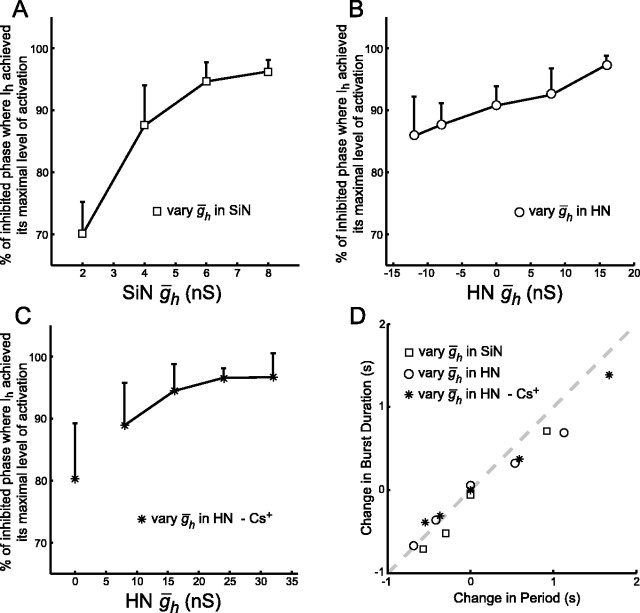Figure 9.
A-C, ḡh determines when Ih reaches its maximal level of activation during the inhibited phase of the burst cycle of a hybrid half-center oscillator. We measured this timing as the percentage of the inhibited phase at which Ih achieved its maximal level of activation. A, SiN ḡh varied. B, HN ḡh varied in the presence of endogenous Ih. C, HN ḡh varied with endogenous Ih blocked by 2 mm Cs+. The data point at HN ḡh = 0 nS is rather fanciful because there is no endogenous h-current and none is added or subtracted with dynamic clamp. Thus, this point is not connected to the rest by a line segment. D, Changes in the oscillator period caused by variation of ḡh are primarily attributable to changes in burst duration of the non-modified “neuron” (equivalent to duration of the inactive phase in the modified neuron). The change in burst duration from the canonical operating point for the non-modified neuron is plotted versus the change in the oscillator period. The dashed line indicates that all of the change in the oscillator period is attributable to change in the burst duration of the non-modified neuron. The data points all lie near this line, indicating that Ih is selectively acting to shorten the inhibited phase of the burst cycle of the oscillator.

